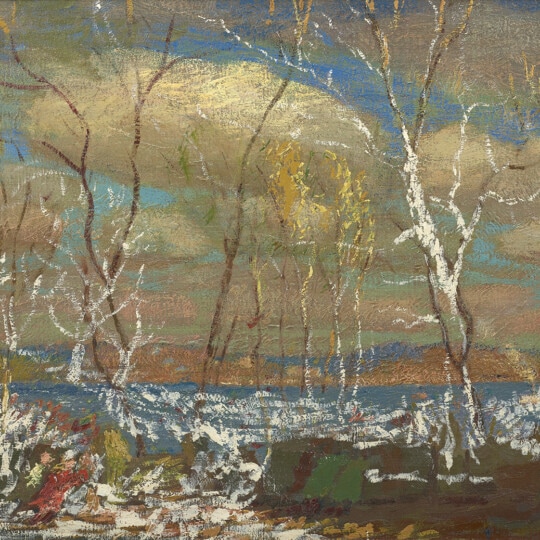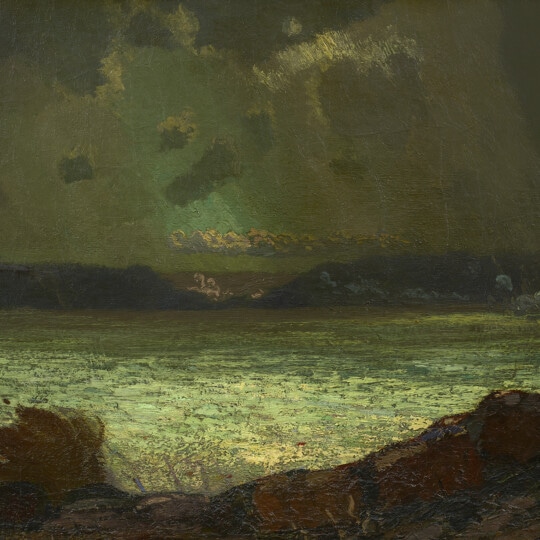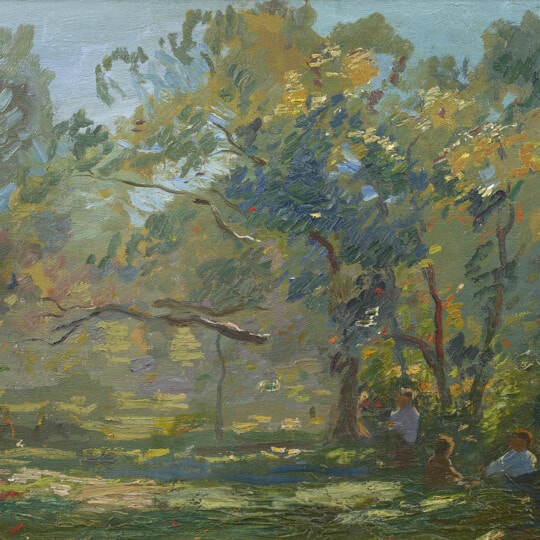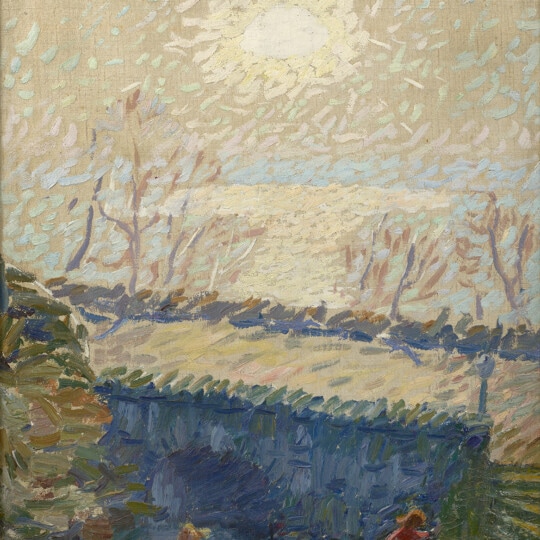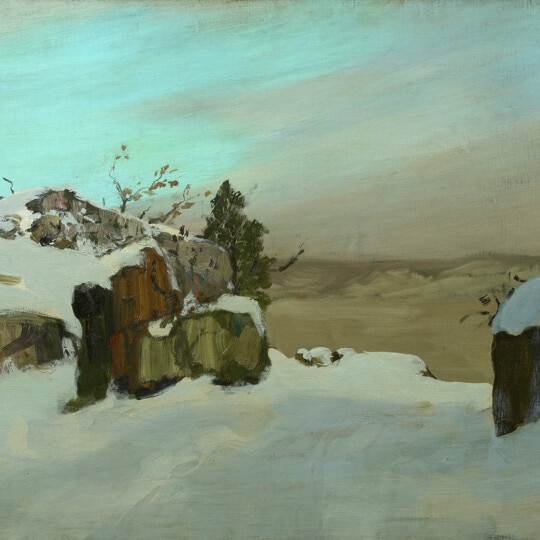Artist Biography
Characterized by brilliant color and light, Van Dearing Perrine’s landscapes earned him the nickname “the Thoreau of the Palisades.” The artist was born in Garnett, Kansas and experienced hardship early in life after the death of his father left his family impoverished. A young Perrine worked as a farm hand, plasterer, and lather, and often traveled along the railroads. In 1893, Perrine moved to New York where he studied at the Cooper Institute and National Academy of Design. At this time, he began sketching from nature on the property of James E. Maxfield, an American painter and illustrator, in Ridgefield,
Characterized by brilliant color and light, Van Dearing Perrine’s landscapes earned him the nickname “the Thoreau of the Palisades.” The artist was born in Garnett, Kansas and experienced hardship early in life after the death of his father left his family impoverished. A young Perrine worked as a farm hand, plasterer, and lather, and often traveled along the railroads. In 1893, Perrine moved to New York where he studied at the Cooper Institute and National Academy of Design. At this time, he began sketching from nature on the property of James E. Maxfield, an American painter and illustrator, in Ridgefield, New Jersey. These early landscapes by Perrine impressed several of his peers who soon followed suit, painting alongside Perrine in Ridgefield. These painting excursions developed into the Country Sketch Club, which held numerous exhibitions including at the National Academy of Design and the Art Institute of Chicago. Perrine then moved from New York to the foot of the Palisades where he painted the immense scenery around him while living in a series of abandoned quarry-worker’s quarters. Perrine would stay in the Palisades until 1922, later renting several buildings in the area and eventually living there with his wife, Theodora Snow.
Perrine held his first solo exhibition in 1903 at the Glaenzer Galleries in New York City. He also exhibited work at Durand-Ruel Gallery and the New Gallery, as well as at the renowned 1913 Armory Show. In 1912, Perrine designed the first of several machines which projected abstract patterns of color onto the wall, and his later work shows an increased interest in color and light as modes of expression. In addition to his painting, Perrine later taught art classes to children, wrote a book titled Let the Child Draw, and taught alongside his wife at the Buxton School in Williamstown, Massachusetts. Perrine found recognition as an artist in his lifetime, with Theodore Roosevelt even purchasing one of his paintings of the Palisades which was displayed in the White House. Today, his work is held in the collection of numerous institutions, including the National Academy of Design, Smithsonian American Art Museum, and High Museum of Art.
Characterized by brilliant color and light, Van Dearing Perrine’s landscapes earned him the nickname “the Thoreau of the Palisades.” The artist was born in Garnett, Kansas and experienced hardship early in life after the death of his father left his family impoverished. A young Perrine worked as a farm hand, plasterer, and lather, and often traveled along the railroads. In 1893, Perrine moved to New York where he studied at the Cooper Institute and National Academy of Design. At this time, he began sketching from nature on the property of James E. Maxfield, an American painter and illustrator, in Ridgefield, New Jersey. These early landscapes by Perrine impressed several of his peers who soon followed suit, painting alongside Perrine in Ridgefield. These painting excursions developed into the Country Sketch Club, which held numerous exhibitions including at the National Academy of Design and the Art Institute of Chicago. Perrine then moved from New York to the foot of the Palisades where he painted the immense scenery around him while living in a series of abandoned quarry-worker’s quarters. Perrine would stay in the Palisades until 1922, later renting several buildings in the area and eventually living there with his wife, Theodora Snow.
Perrine held his first solo exhibition in 1903 at the Glaenzer Galleries in New York City. He also exhibited work at Durand-Ruel Gallery and the New Gallery, as well as at the renowned 1913 Armory Show. In 1912, Perrine designed the first of several machines which projected abstract patterns of color onto the wall, and his later work shows an increased interest in color and light as modes of expression. In addition to his painting, Perrine later taught art classes to children, wrote a book titled Let the Child Draw, and taught alongside his wife at the Buxton School in Williamstown, Massachusetts. Perrine found recognition as an artist in his lifetime, with Theodore Roosevelt even purchasing one of his paintings of the Palisades which was displayed in the White House. Today, his work is held in the collection of numerous institutions, including the National Academy of Design, Smithsonian American Art Museum, and High Museum of Art.

